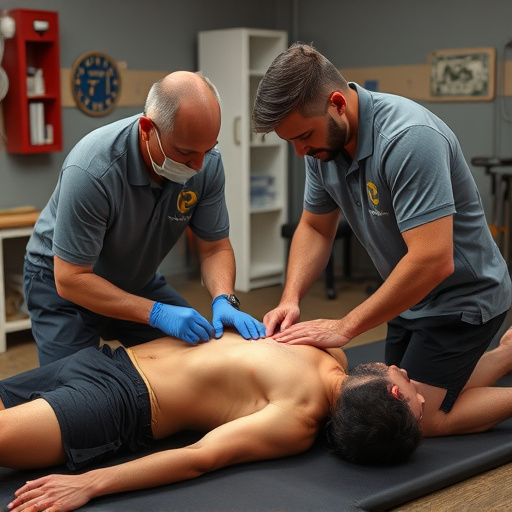Federal workplace injury reporting is a stringent yet vital process governed by specific regulations, crucial for HR professionals to master. HR personnel systematically collect and document detailed information about work-related injuries, contributing to managing workplace safety and supporting affected employees. They foster a culture of safety through comprehensive strategies like ergonomy training, hazard identification, open communication, wellness programs, and ergonomic assessments, ultimately reducing federal workplace injury rates.
In the realm of federal workplace safety, accurate reporting of injuries is paramount. This article delves into the crucial role Human Resources (HR) professionals play in navigating complex federal workplace injury reporting requirements. We explore strategies for effective data collection and documentation, empowering HR to foster a culture of prevention. By understanding key regulations and implementing best practices, HR can contribute to managing and minimizing federal workplace injuries, ensuring a safer work environment for all employees.
- Understanding Federal Workplace Injury Reporting Requirements
- HR's Role in Accurate Data Collection and Documentation
- Strategies for Preventing and Managing Workplace Injuries Federally
Understanding Federal Workplace Injury Reporting Requirements

Federal workplace injury reporting is a critical aspect of ensuring employee safety and health within government agencies. These organizations are bound by specific regulations that mandate thorough documentation and disclosure of any work-related injuries or illnesses. Comprehending these requirements is essential for Human Resources (HR) professionals, as it enables them to facilitate accurate record-keeping and timely reporting.
The process involves identifying and categorizing federal workplace injury cases, including incidents leading to back pain relief, spinal adjustments, or the need for extensive rehab services. HR personnel play a pivotal role in gathering relevant information, such as details of the incident, medical diagnoses, and the extent of disability. This data is then meticulously recorded and reported to the appropriate authorities, contributing to the overall management of workplace safety and the provision of adequate support for affected employees.
HR's Role in Accurate Data Collection and Documentation

In the federal workplace, Human Resources (HR) professionals play a pivotal role in ensuring accurate data collection and documentation regarding injury incidents. This meticulous process involves gathering detailed information about every federal workplace injury, from the initial report to the final resolution. HR personnel are responsible for creating comprehensive records, meticulously documenting the circumstances surrounding each injury, including the date, time, location, and cause.
Accurate data collection is not just about ticking boxes; it’s about providing valuable insights that can help prevent future injuries. By carefully documenting each incident, HR departments enable effective post-injury care and support for affected employees. Additionally, these records facilitate a deeper understanding of workplace hazards, leading to improved safety protocols and, ultimately, better headache relief and auto accident recovery measures for all federal workers.
Strategies for Preventing and Managing Workplace Injuries Federally

In the federal workplace, preventing and managing injuries is a multifaceted endeavor that requires a proactive approach. Human Resources (HR) plays a pivotal role in fostering a culture of safety by implementing comprehensive strategies. These include regular training sessions on ergonomy, hazard identification, and safety protocols for all employees. By encouraging open communication about potential risks and incentivizing the reporting of injuries, HR can ensure early intervention and prevent minor issues from escalating.
Additionally, offering on-site wellness programs and promoting healthy habits can significantly reduce federal workplace injury rates. Chiropractic care and other alternative treatments have shown promise in alleviating back pain, a common issue in many occupations. Implementing ergonomic assessments and providing tailored solutions for repetitive strain injuries can further safeguard workers’ health. Effective management of workplace injuries involves not only immediate treatment but also long-term strategies to ensure a safe and healthy work environment.
Human Resources (HR) plays a pivotal role in ensuring proper federal workplace injury reporting by facilitating accurate data collection, documentation, and implementing strategies to prevent and manage injuries. By understanding and adhering to relevant regulations, HR professionals can contribute significantly to creating safer work environments at the federal level, ultimately reducing the incidence of workplace injuries.














